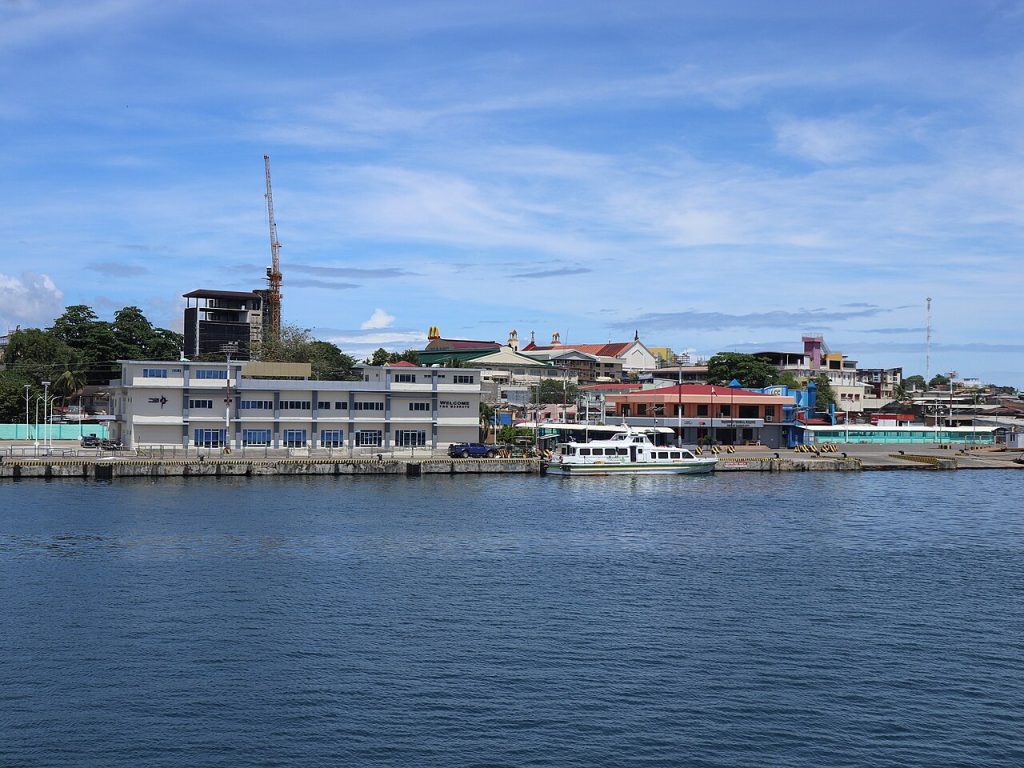
Masbate City Port Area by Patrickroque01
Welcome to the component city of Masbate – the vibrant provincial capital of Masbate Province in the Bicol Region of the Philippines. This coastal city has 30 barangays, a 2020 population of 104,522 people, and a land area of 188.00 sq. kilometers (72.59 sq. miles).
The city’s territory, with 37.6 kilometers (23.4 mi) of shoreline, includes 300 square kilometers (120 sq mi) of municipal waters, 1,240 hectares (3,100 acres) of mangroves, 560 hectares (1,400 acres) of coral reefs, and 400 hectares (990 acres) of sea grasses. Residential land use covers 229.920 hectares (568.14 acres); commercial 15.0515 hectares (37.193 acres); fishponds 252.9759 hectares (625.117 acres); and institutional 2,813.9192 hectares (6,953.346 acres).
Known as the “Rodeo Capital of Southeast Asia”, Masbate City is a unique blend of wild-west ranch culture, rich history, and unspoiled natural beauty.
by Masbate’s Pride
Here’s a blog-style guide to discovering its charm:
A Brief History & Cultural Essence
- Early Roots
Archaeological evidence shows Bronze Age settlements across Masbate’s islands (Masbate, Ticao, Burias), with prehistoric gold-making traditions. - Colonial Legacy
Masbate City began as a Spanish town in 1864 and has gradually evolved to become a provincial capital. Its cathedral—St. Anthony of Padua—founded in 1578, still stands as a symbol of this colonial past. - Linguistic Melting Pot
Locals speak Masbateño (also called Minasbate), a Bisayan dialect with over 700,000 speakers.
by Empire Philippines
Festivals & Celebrations
- Rodeo Masbateño (April)
Asia’s only rodeo show! Expect thrilling bull riding, cattle wrestling, barrel racing, cowboy parades and street dancing. - Pagdayao Festival (June 13)
A spiritual celebration honoring St. Anthony of Padua, featuring religious ceremonies and community feasts. - Lapay Bantigue Dance Festival (Cityhood Day, Sept 30)
Inspired by the graceful seagull (“lapay”), this folk dance is nationally recognized and celebrates local heritage.
Top Things to Do & See:
City Landmarks
- St. Anthony of Padua Cathedral
A historic Baroque church reflecting centuries of faith. - Coastal Resource Management Interpretative Center
The first of its kind in the Philippines—an excellent introduction to Masbate’s environment and conservation efforts.
Natural & Marine Attractions
- Buntod Sandbar & Marine Sanctuary
A short boat ride from the city offers snorkeling in vibrant coral reefs and lounging on powdery white sands. - Bugsayon Marine Sanctuary & Pawa Mangrove Park
Explore protected reefs and a scenic 1.3 km boardwalk through lush mangroves, a birdwatcher’s delight. - Tattoo Island (Minalayo)
Mysterious caves, wildlife, and an underground lagoon await adventure seekers. - Bugui Point Lighthouse & Bayot Ancestral House
Connect with the past through colonial-era landmarks that overlook the sea.
by Tourism Philippines
Beyond the City: Island Escapades
- Ticao Island (Manta Bowl)
Dive among manta rays, whale sharks, and hammerheads at one of Southeast Asia’s best dive sites. - Burias Island (Animasola & Sombrero Islands)
Stunning limestone formations and hidden beaches perfect for snorkeling and photography. - Halea Nature Park & Catandayagan Falls (Cataingan)
Peaceful lagoons, garden trails, and refreshing waterfalls; ideal for nature lovers.
Getting There & Around
By Air:
Direct flights from Manila via Cebu Pacific and PAL to Moises R. Espinosa Airport (MBT)—about 1¼ hours.
By Land & Sea:
Ro-Ro buses from Luzon to Pilar (Sorsogon) followed by ferry to Masbate—journey takes 16–18 hours .
On the Ground:
Tricycles, jeepneys, and boat rentals are available locally. For self-drive options, Ro-Ro services accommodate private cars and motorbikes.
Food & Flavors
- Fresh Seafood & Livestock Fare: Enjoy grilled bangus, sinuglaw, and dishes like Laing, Adobo sa Gata, and Inun-unan.
- Unique Local Delicacies: Try Puto Lanson, Molido (potatoes and pili nuts), Carmelado (buffalo milk porridge), and Susô (snail dish).
- Floating Restaurants & Street Stalls: Sample fresh catches and local goodies while enjoying the bay breeze.
by Wilton Kho
Best Time to Visit
- Ideal Season: December to May—dry, sunny, and perfect for beaches and diving.
- Festival Alert: April for the rodeo, June for Pagdayao, and September 30 for cityhood celebrations.
Itinerary Snapshot
| Day | Highlights |
| Day 1) | Dive into Masbate City’s heritage: cathedral, Bayot House, and CRM center, followed by shopping and local eats. |
| Day 2) | Boat excursion to Buntod Sandbar for snorkeling, swimming, and mangrove boardwalk strolls. |
| Day 3) | Island hop to Tattoo Island or venture to Ticao/Burias for diving and rock formation. |
Why Masbate City Should Be on Your Radar
- One-of-a-Kind Rodeo Culture: Feel the excitement of a cowboy festival like nowhere else in Asia.
- Untouched Natural Beauty: Marine sanctuaries, white-sand beaches, mangroves, and biodiversity abound.
- Rich Heritage & Warm Locals: Engage with centuries-old traditions and get to know the Masbateño spirit.
- Off-the-Beaten-Path Charm: Escape tourist crowds and enjoy affordable, authentic experiences.
Whether you’re drawn by adrenaline-fueled rodeos, serene seaside sunsets, or cultural richness, Masbate City promises a memorable journey. Pack your sense of adventure, a taste for fresh seafood, and a spirit to embrace a hidden gem in the Philippines!
by Cebu Pacific Air